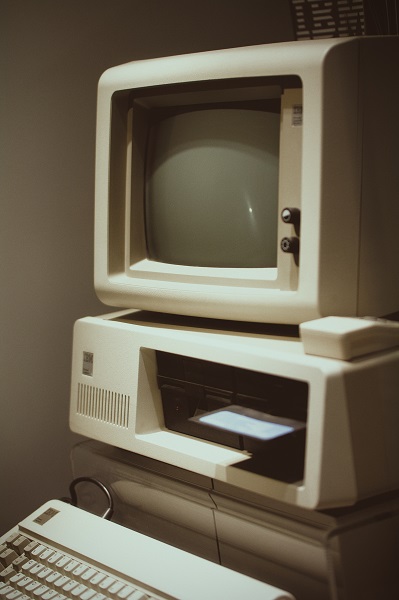Technological advances have made enormous changes to the way we work and the kind of work we do. They’ve also helped us declutter the office!
The Ashford blog has a nostalgic glow about it this week. While researching the latest elearning trends (online of course, how else?) we chanced upon the fact that 21 years ago – on 4 September 1998 to be exact – Google was born.
It got us thinking about how much our industry has changed in a short space of time. Here we are in our little office in Hampshire, creating courses that people all over the world can access when, where and how they need to. We use terms like elearning, mobile learning, virtual reality, gamification and artificial intelligence. We hold virtual meetings via Skype and Google Hangouts. Our work calendars are all synced.
The good old days
When Ashford first started, the world was a very different place. Ashford Open Learning (as it was then) was set up in 1987 as a direct result of an increasing demand from industry for improved skills and training, and the need for printed study material to meet the demand.
In those days, ‘open learning’ was a new style of training that gave learners more choice and control over their learning. We developed self-study workbooks alongside printed training materials for more traditional face-to-face training. Most learning at that time happened in a training room, with a trainer at the front delivering the content.
There was no world wide web. We did our research using printed material and the LD office was lined with shelves full of reference books and ring binders full of notes on just about every topic under the sun.
We travelled all over the UK – and further afield – to sell our wares, present proposals and discuss clients’ feedback. Then, as now, we produced newsletters. But in the 1990s and 2000s, it was printed on glossy paper and sent in the post. There was email, of course (it wasn’t the Stone Age!) but it was used mainly for sending messages, e.g. to tell a client that the latest printed draft was in the post. After all, most people didn’t have enough space in their inbox for big attachments.
In 1995, just 7% of people in the UK had a mobile phone. Now, Statista estimates that around 94% of adults own a mobile.
Now look what we can do!
Today, workplace learning is much more cost-effective to provide. There’s no need to pay for a training room or travel to get there, or to hire an external trainer for the week.
It’s also eco-friendly. Courses are delivered directly to the learner’s PC or mobile device, so there are no travel emissions. And there’s no need for printouts notepads, files, folders, dictionaries, reference books… Everything you need is available online.
For those of us who started our working lives in print, there’s nothing that beats the smell of a book – especially one that’s newly printed. Other than that, today’s approach to research, learning and development beats the olden days hands down.
30 years of innovation
- August 1989: British scientist Tim Berners-Lee invents the World Wide Web (WWW). The web was originally conceived and developed to meet the demand for automatic information-sharing between scientists in universities and institutes around the world.
- 1992: IBM unveils the first ‘smartphone’, the Simon Personal Computer (though smartphones won’t become popular until the early 2010s)
- 1998: Google is founded. Larry Page and Sergey Brin founded the company while they were Ph.D. students at Stanford University in California. They had started creating their search engine as a research project in 1996.
- 2000: Bill Gates launches Microsoft’s touch input tablet computer
- 2001: Jimmy Wales and Larry Sanger launch Wikipedia
- 2004: podcasting is invented
- 2005: YouTube is launched
- 2007: Apple launches the first-generation iPhone
- 2010: Apple launches the first-generation iPad


